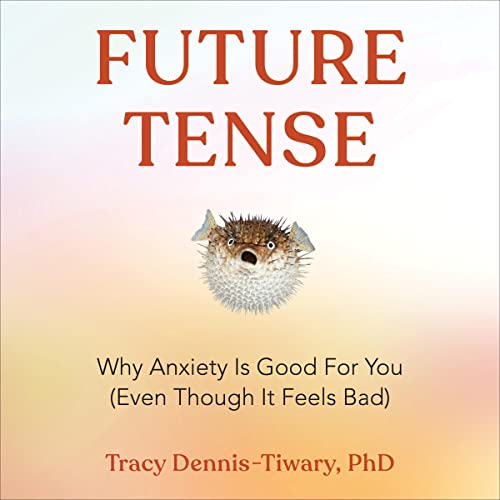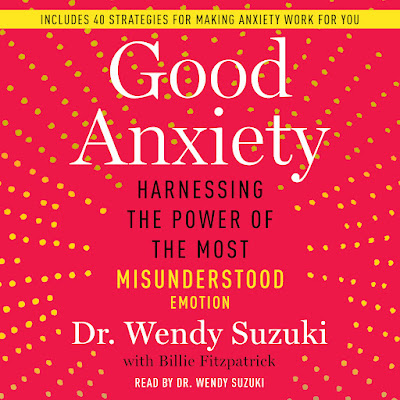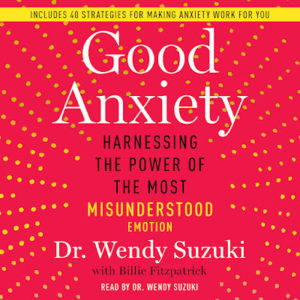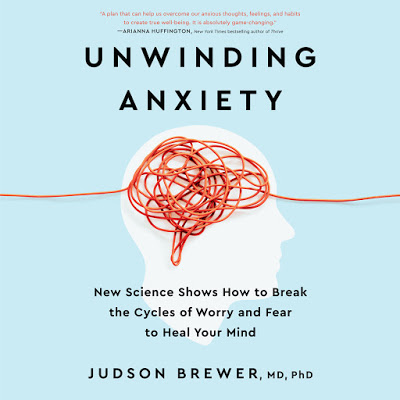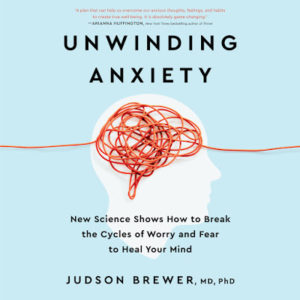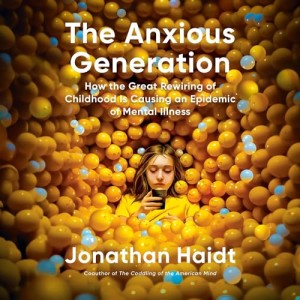 From the author of The Coddling of the American Mind, The Righteous Mind, and The Happiness Hypothesis, comes another compelling social commentary that helps us better understand and take part in our social evolution. Jonathan Haidt, a social psychologist at the Stern School of Business (NYU), once again asks what kind of society we want to create and empowers us with the knowledge to become agents of change.
From the author of The Coddling of the American Mind, The Righteous Mind, and The Happiness Hypothesis, comes another compelling social commentary that helps us better understand and take part in our social evolution. Jonathan Haidt, a social psychologist at the Stern School of Business (NYU), once again asks what kind of society we want to create and empowers us with the knowledge to become agents of change.
In Anxious Generation: How the Great Rewiring is Causing an Epidemic of Mental Illness, Haidt identifies a critical period between 2010 and 2015 when our phones and computers became more than tools for communication and work, but they became “platforms upon which companies competed to see who could hold on to eyeballs the longest.” (p. 115) Not coincidentally, it was during this same industrial change that the western world saw a rapid increase in anxiety and depression among teenagers, revealing a society unprepared for the technological upheaval it faced.
Haidt contends that the “virtual world” is disembodied, limiting communication to language without the physical contact and expressive synchronous communication that our brains evolved to master. It’s a world with little real physical risk, offering bursts of addictive dopamine as we scroll from post to post. Individuals can join many communities online but often do so without the social investment and learning necessary in face-to-face interactions. It’s a new world, one which has capitalized on our biology, but one we have not yet biologically or socially evolved to handle in a healthy way.
But this is not an anti-technology book, it’s a book about how two “experience blockers” disrupt the natural trajectory of development, making us lonelier and more anxious. Changes in parenting practices are the second “experience blocker.” Our efforts to keep teens safe have been changing over the decades, we’ve overprotected and overscheduled them, denying them the necessary risk-taking and discovery opportunities essential for brain development during adolescence. We have denied them even the basic joys of unstructured play. But our protections have been unbalanced, linked to his first point, we’ve failed to protect them in the digital world, where there’s no consensus on rites of passage or developmentally appropriate use of technology.
Haidt refers to these combined issues as the “Great Rewiring.” The book provides an excellent historical overview of changes in parenting and adolescent behavior over generations. You’ll see reflections of your parents, grandparents, and children, noticing the significant differences in practices and the physical environment for development. Effective images and graphs drive home his main arguments without overwhelming the reader with data points. The data presented speaks for itself, but lest you have doubts Haidt effectively handles and incorporates arguments he has gotten and wondered over the years. Allow him to open your eyes to the data that led him to writing this book.
While directed at parents, this book is important for socially responsible technologists, scientists, legislators, and educators. Throughout the book, Haidt offers a social scientist’s and parent’s perspective on guidelines for teens’ interaction with technology and social experiences. Supporting his thesis with reams of extensive but easily accessible research, Haidt explains the skills we need to rekindle and the new skills we need to develop to overcome the mental health damage inflicted on a generation by changing parenting practices and social media. He provides specific developmental timetables and strategies, backed by research and parenting experience, explaining how and when certain types of technology should be introduced. While you may not agree with every perspective or suggestion, Haidt’s chapters provide essential talking points and critical issues that must be addressed in our changing world.
Haidt assertively demonstrates that a laissez-faire approach to technology has led to an era of psychological problems that can only be combated with collective change of which we are all individually a part. As technological change shows no signs of slowing, his insights are more crucial than ever. We need to invest individually and in communities through real-world interactions preparing for our future.



